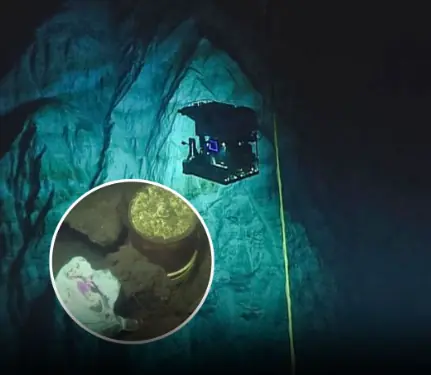
4 Vegetables That Spike Blood Sugar Faster Than Meat or Fish: Diabetics Should Avoid Them
4 Vegetables That Spike Blood Sugar Faster Than Meat or Fish: Diabetics Should Avoid Them
Here are four types of vegetables that can raise blood sugar levels faster than meat or fish, making them unsuitable for people with diabetes.
It’s widely believed that eating vegetables is always good, but not all vegetables are safe for diabetics.

For individuals with diabetes, choosing the right vegetables is crucial, as some seemingly harmless vegetables can cause significant spikes in blood sugar if not consumed properly.
Below are four vegetables that raise blood sugar levels faster than meat or fish, which diabetics are advised to avoid.
4 Vegetables That Spike Blood Sugar Faster Than Meat or Fish
-
Lotus Root
According to Aboluowang, lotus root has a low glycemic index (GI) of 32.6, but it contains 11.5% carbohydrates. For diabetics, lotus root can be a good substitute for staple foods as it is high in fiber and provides long-lasting satiety. However, it should not be consumed in large quantities like other vegetables. -
Pumpkin
Pumpkin has a high GI of 75 and contains 15% carbohydrates, contributing 56 kcal per 100 grams. A study published in the Journal of the American College of Nutrition highlights that high-GI foods can cause rapid spikes in blood sugar. Therefore, pumpkin should not be overused in daily meals. -
Pickled Vegetables
Pickled vegetables are high in salt. While salt itself does not directly affect blood sugar, excessive salt consumption can increase blood pressure and lead to weight gain, which may result in insulin resistance. This, in turn, reduces insulin efficiency and increases the risk of diabetes. -
Potatoes
Potatoes have a GI that ranges from 60 to 87, depending on the cooking method, with mashed potatoes having the highest GI at 87. Eating potatoes in any form—fried, steamed, or mashed—can cause a rapid rise in blood sugar. Diabetics should limit potato consumption and opt for lower-GI alternatives instead.
News in the same category


7 signs that you should stop drinking coffee

This One Superfood Could Tackle Major Health Issues—Here’s What You Need To Know

How to Treat H. Pylori (Helicobacter Pylori) Naturally Without Antibiotics

Depressing find at the bottom of the Mariana Trench is a warning to the world

From Causes to Cures: Everything You Need to Know About Fatty Liver

4 Clear Signs That Appear 15 Minutes Before a Stroke: Call for Immediate Help

4 warning signs from the appendix, do not ignore!

8 Unusual Signs That May Indicate Cervical Can.cer

7 Powerful Exercises to Relieve Heel Pain and Treat Plantar Fasciitis Naturally

Scientists May Have Actually Found One Of The Causes Of Autism

Don’t go to sleep without taking this — 1 cup before bed clears excess sugar

3 Ways to Stop Acid Reflux Naturally

The Reason You May Get Random Stabbing Pai:ns in Your Chest Explained

Nose Picking What This Taboo Habit Really Reveals About Us

Those Mysterious Leg Bruises? They Might Indicate Dang.erous Diseases

What does this gesture signify?

Early Cervical Cancer Clues? Don’t Ignore These 4 Foot Warning Signs

Wa.rning: Sple.en Ca.nc.er and Things Not to Be Ignored
News Post

More and more people are dy.ing from diabetes. Doctors warn: In cold weather, it’s better to eat plain white rice than to keep doing these 4 things

7 signs that you should stop drinking coffee

This One Superfood Could Tackle Major Health Issues—Here’s What You Need To Know

How to Treat H. Pylori (Helicobacter Pylori) Naturally Without Antibiotics

Depressing find at the bottom of the Mariana Trench is a warning to the world

From Causes to Cures: Everything You Need to Know About Fatty Liver

Electrical devices to unplug during storms, thunder, and lightning

4 Clear Signs That Appear 15 Minutes Before a Stroke: Call for Immediate Help

4 warning signs from the appendix, do not ignore!

8 Unusual Signs That May Indicate Cervical Can.cer

7 Powerful Exercises to Relieve Heel Pain and Treat Plantar Fasciitis Naturally

Scientists May Have Actually Found One Of The Causes Of Autism

Don’t go to sleep without taking this — 1 cup before bed clears excess sugar

3 Ways to Stop Acid Reflux Naturally

The Reason You May Get Random Stabbing Pai:ns in Your Chest Explained

Nose Picking What This Taboo Habit Really Reveals About Us

Those Mysterious Leg Bruises? They Might Indicate Dang.erous Diseases

What does this gesture signify?

Early Cervical Cancer Clues? Don’t Ignore These 4 Foot Warning Signs
